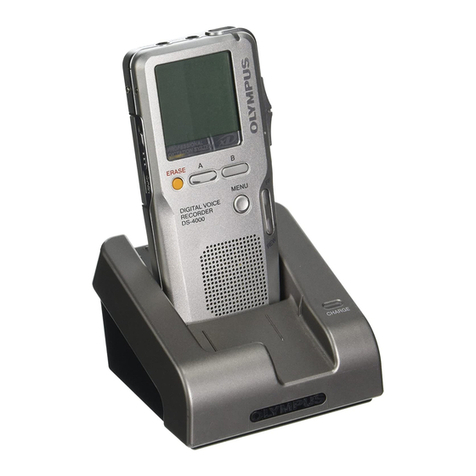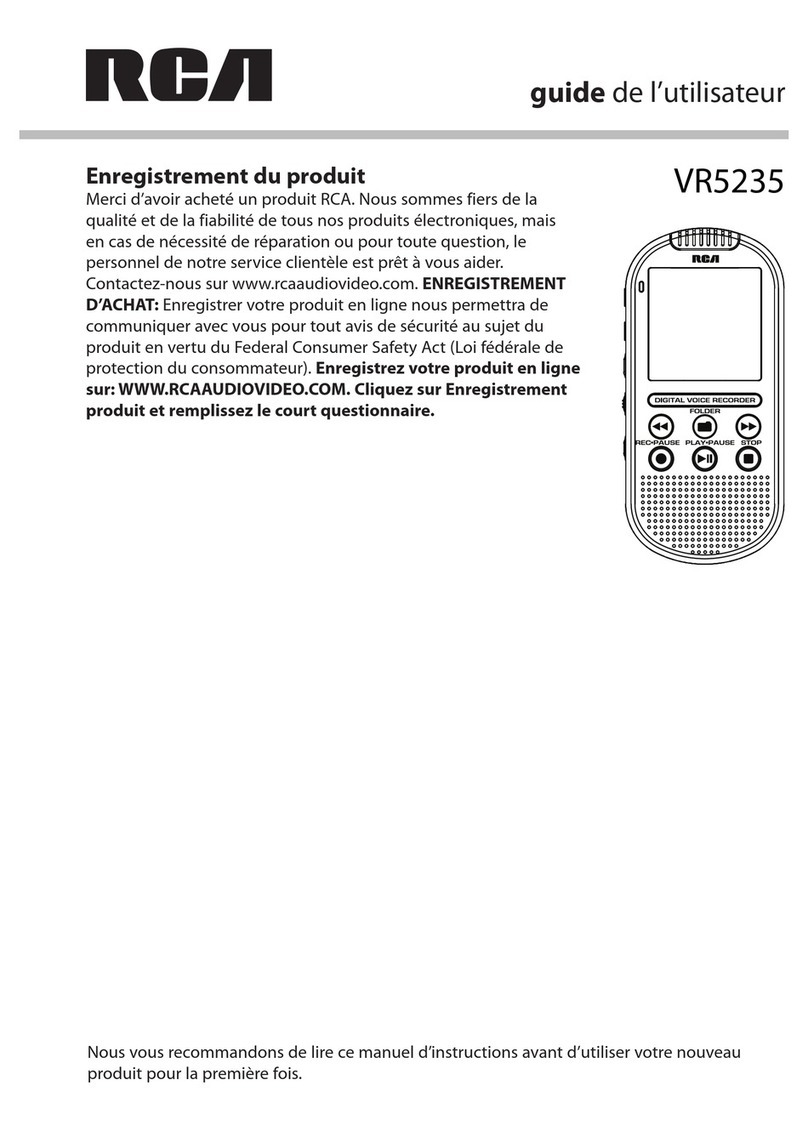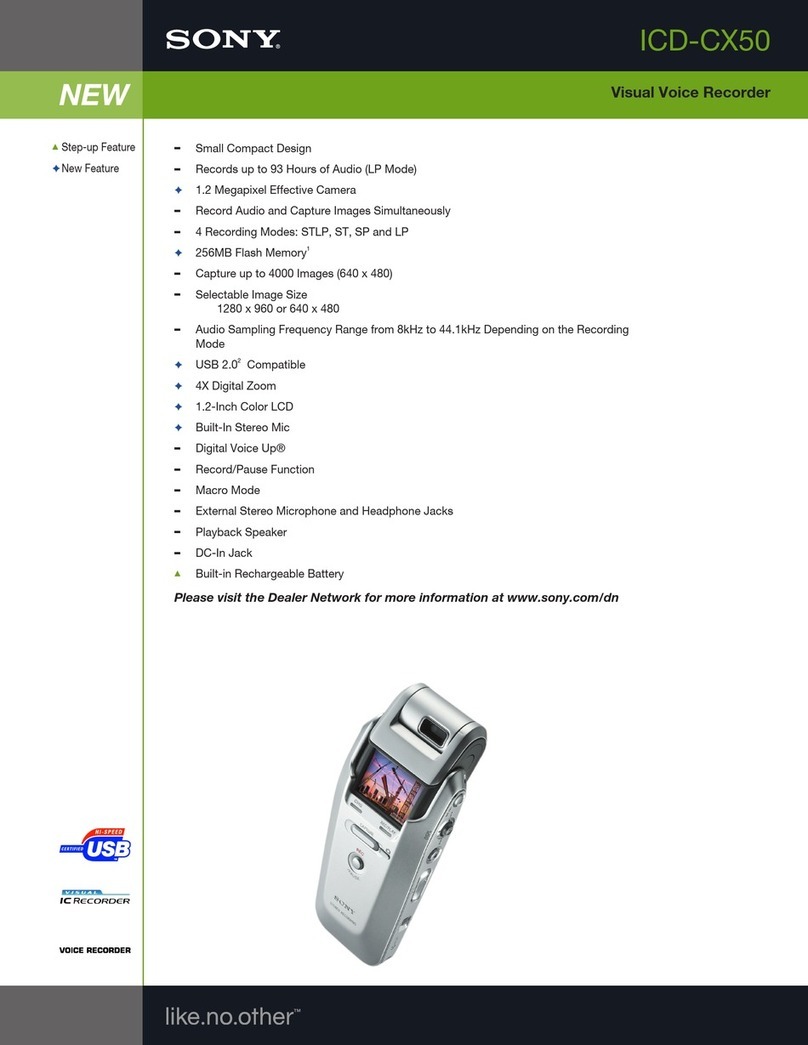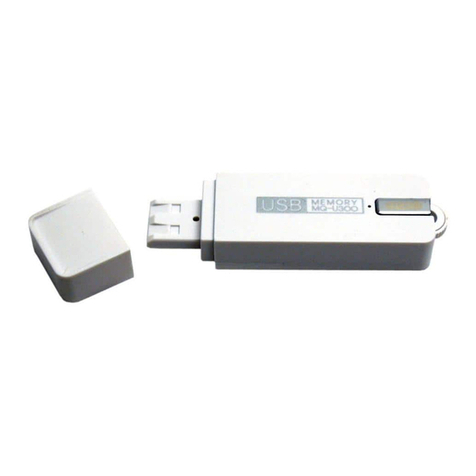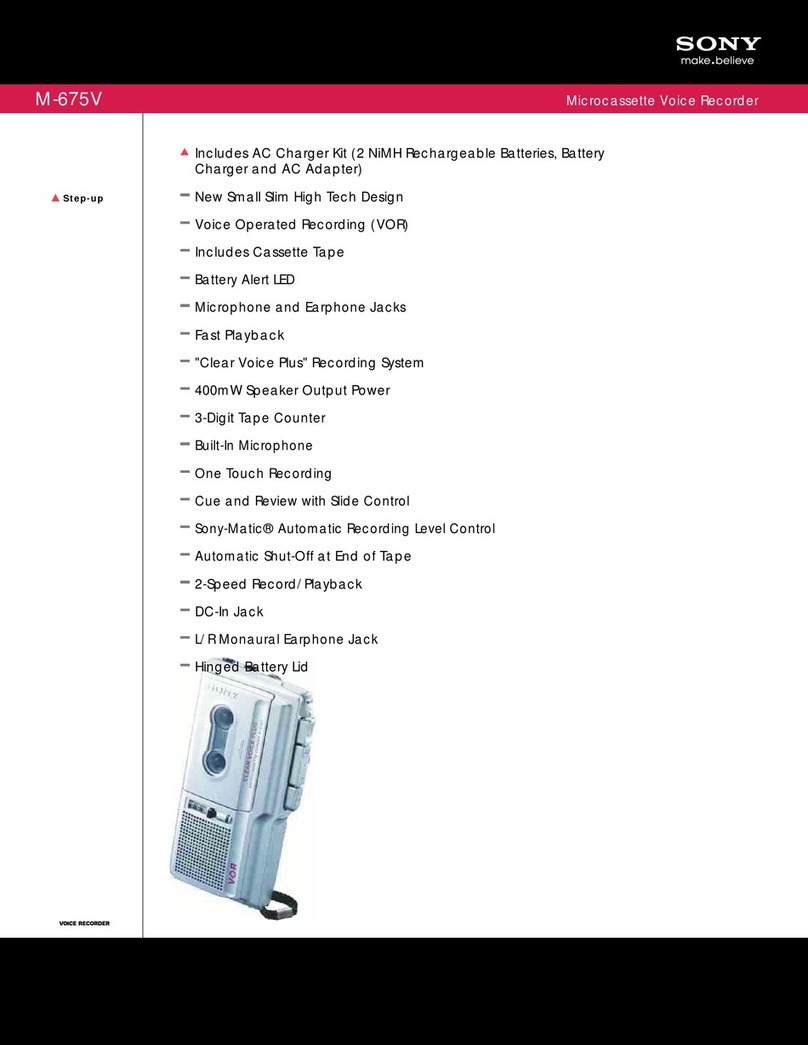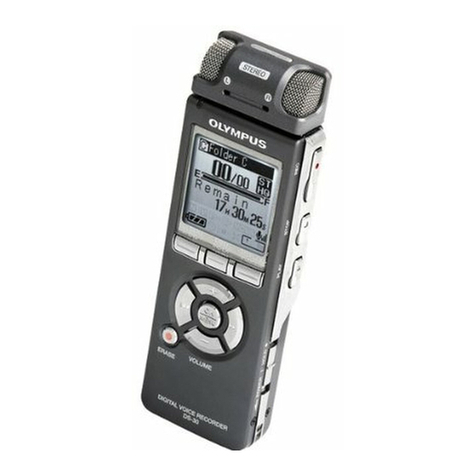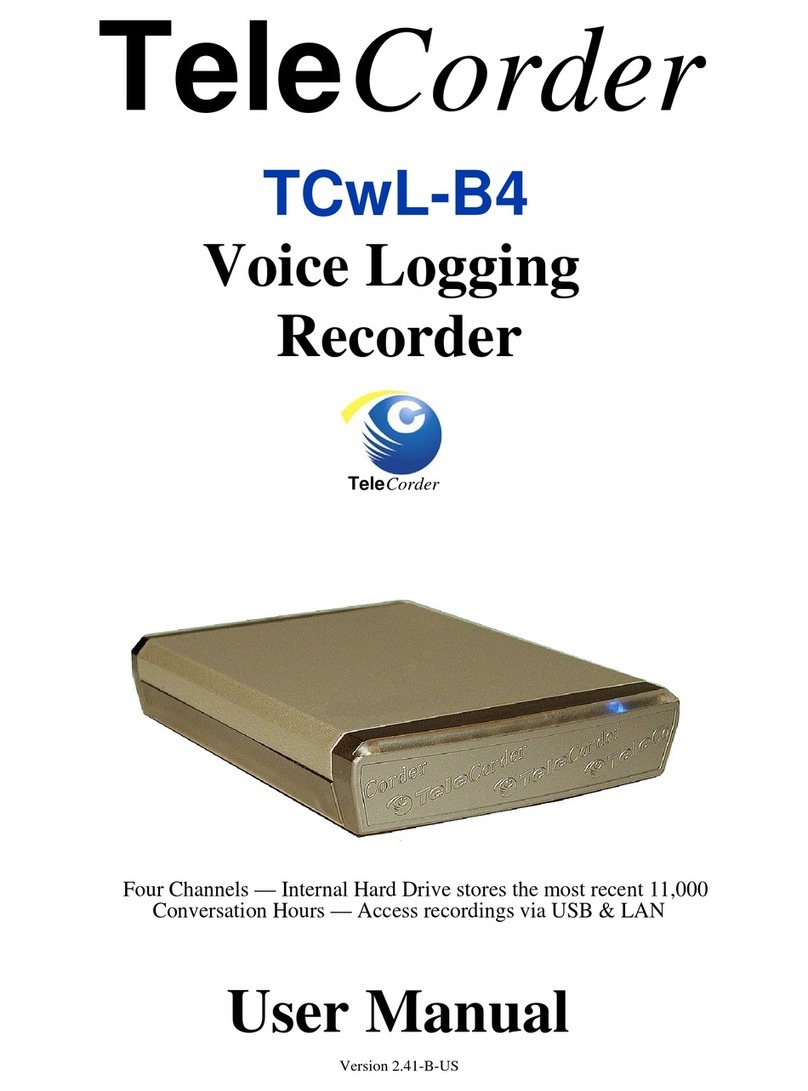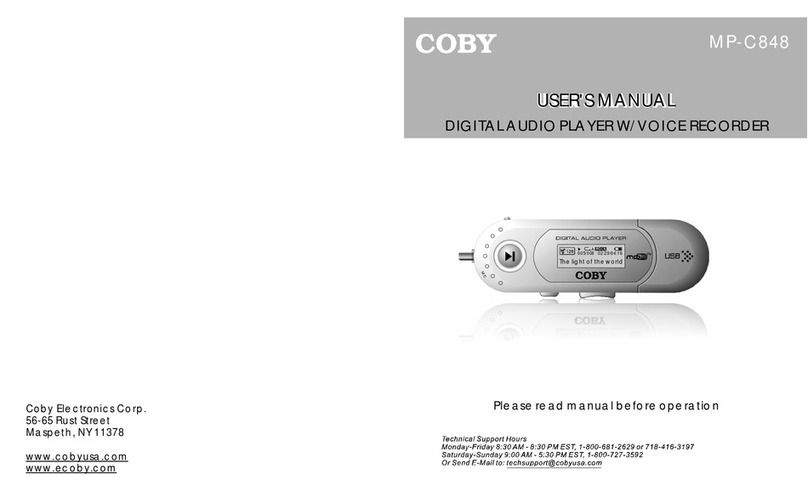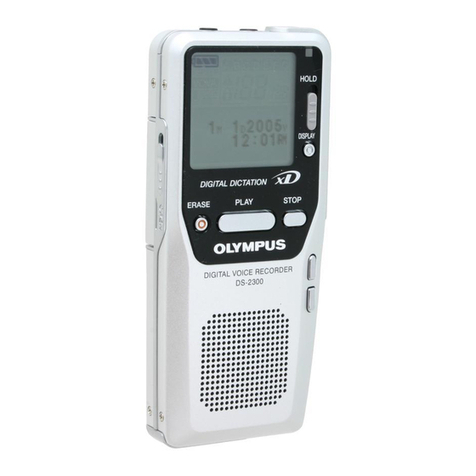TANDBERG 62 series User manual

January1967
TANDBERG
TAPE.RECORDER
Models64xand62x
Alignment
instruction
for
heads
and
electronics
Preface
The models 64x and 62x are improvedversions of has been introduced to improve the frequency re-
the earliermodels
64-62 and this alignmentinstruc- sponseand the signal
to noiseratio.
tion is an appendixto the servicemanual
for model The oscillatorhas been redesigned
and fullytransis-
64:-62.lt covers the special head alignments and torized.Certainminorchangeshavebeenintroduced
electricaladjustmentsnecessaryfor model 64x and in the equalizationcircuits,mainlychanges
of com-
62x. ponent values.A microswitch is further introduced
in the bias circuitto reduce
the bias in 1.7/ei.
p.s.
The models 64x and 62x have the same operation tape speed.This switch is operated
automatically
by
facilitiesas 64-62. A new, and separatebias head the speedselector
mechanism.Seefig. 3.
Ti.^d.{*..q
r=r=rErlEr/
TANDBERGS RADIOFABRIKK A/S OSLO NORWAY

1.0 Alignment
It is importantthatthe contactbetween
the tape and
the heads on the tape recorder is good. To obtain
this contactthe tape should be run throughthe tape
recorder
5-10 times at normalspeed to have the
tape polished before measuringthe frequency re-
sponseand
thesignal
to noise
ratio.
1.0.1Demagnetizing
Demagnetize
the heads and adjacent parts before
aligning
the heads.
1.0.2.The mounling plate lor the heads
Theheightof the mounting
plate
for the heads
(15.4)
is alignedby the adjustmentscrew at the rearof the
playback head. Move the operating lever slowly to
normalforward
drive
witha tight
tape
inserted.
Align
the heightof the mounting
plate
for the heads
until
thetape runs
equidistant
fromthe flangesof thetape
guide
(79,2).
1.0.3
The adjustabletape guide
Set the operatingleverin normalforward drive with
tape inserted
and depressthe push-button
lll. Align
the adjustabletape guide (79.3)
until the tape runs
equidistant
from the flanges
of the adjustabletape
guide.
Repeat
1.0.2.
2.O Adjustment of the oscillator and bias head
circuits.
2.0.1Insertone 10ohm resistorin serieswith each
bias head half to ground and connect a V.T.V.M.
acrosseach resistor.
2.O.2
R609and R
612is turned up to 1 o'clock posi-
tion while R607 and R610 are set to approx. 11
o'clock. Rel.fig. 3.
2.0.3Set the tape recorder
to stereo recordingand
the speedselector
to 7tlui.p.s.
2.0.4Usea calibrated
long wave receiver,frequency
meter or frequency
counterfor the indication
and
adjust the oscillatorfrequencyby C610 until f/osc.
= 85.5
kc/s.
2.0.5Set the tape recorder
for mono recording
CH
1
andthespeedselectorto 7tlz
i.p,s.
2.0.6
Adjust the oscillator frequency with L601
F/osc.
will then be 85.5kc/s.
2.0.7
Setthetape recorderfor mono recordingCH2.
2.0.8ReadjustL 601
to compromise
ifnecessary.The
osc. frequency deviation between mono recording
CH1, CH
2 and stereo should be less than 2 kc/s.
The deviation should be indicated with frequency
meter,longwavereceiveror frequency
counter.
2.0.9
Adjust C602 and 604 to max. reading on the
V.T.V.M.
(between
100mV and400mV).
3.0 Head alignment
and track control with Tandberg
Test Tapes,Model 64x
3.1. The playback
head
3.1.1Connect one V.T.V.M. to each CATHODE
FOLLOWER
output.
3.1.2Height
alignment:
Playback the test tape No. 1. This is a full track
pre-recorded
tapewith 1000
c/s recorded
atTt/zi.p.s.
tape speed. The record level of the exact area
corresponding
to track 3 is reduced 30 dB. Adjust
theheightoftheplayback
head
until
minimumoutput
is botainedon a V.T.V.M.fromtrack3 (ch.
2).
3.1.3
Azimuthalignment:
Play back the test tape No. 2. This is a full track
pre-recorded
tape with 10.000
cls al 71lzi.p.s.tape
speed.
Adjust the azimuth
position
of the playback
head until maximum reading is obtained on both
output
meters.
3.1.4.
Lateral
alignment:
Check the lateralpositionof the playback head by
pullingthe pressurepad (59.5)
awayfrom the erase
head when the test tape No. 2 is played back. The
output levelshould not decreasemore than 3 dB.
Adjust the lateral position of the playback head, is
necessary,
by turning the head mounting plate. Re-
adjustthe azimuth
position.
3.2 The record head.
3.2.1
Adjust the horizontal
positionof the bias head
until the head is in center of the record head. Ref.
fig. 1.
3.2.2
Adjustthe height
of the biasheaduntilthe tape
runsfreely
in the groove
infront
of thebias
head.
3.2.3
Height
alignment:
The recordheadis setina preliminaryposition
where
approx. 0.1 mm (.0025")
of the lamination for the
uppertrack is visible
abovethe tape.The position
of
the record head can be inspected
by usingthe iron
powder method (Magna-See).
Recordall four tracks
on the tape and dip the tape in the solution.The
patternon the tape will show il the position of the
headiscorrect.
Readjust
if necessary.
3.2.4
Azimuth
alignment:
Connect a signal generatorto the HI-LEVELinputs
CH1 and CH2, and two V.T.V.M.
to the CATHODE
FOLLOWER
outputs
CH1and CH2.
Make a stereo recordingin B-test al 7t/z i.p.s.of a
15.000c/s signal.Adjust the azimuthof the record
headto max.reading
on the outputmeters.
The out-
put level should now be approx. 100 mV with the
playback
volumecontrols
to max.,
readjust
therecord
gain controlsuntil this is obtainedand check the
azimuth
position
of the record head.
3.2.5
Lateral alignment:
Check the lateral position of the record head by
pullingthe pressurepad (59.5)
awayfrom the erase
headduring the recording.
The output levelshould
not decrease more than 3 dB. Adjust the lateral
position
of the record head,if necessary,by turning
the head mounting plate. Recheck the height and
azimuth position of the head. Ref. para. 3.2.3and
3.2.4.
3.3 The bias head.
3.3.1
Heighl
alignment:
Connect two V.T.V.M.
directly across the recording
heads.
Set the tape recorderto stereo recordingat
71lz i.p.s.
and turn both playback
volume controls
down to 0.

Adjust the height of the bias head by the height
adjustmentscrew (ref.fig. 1) until max. reading is
obtained
on both V.T.V.M.
Check that the tape runs
freely in the groove in front of the bias head and
that there is sufficientclearance between the bias
head and the mounting plate for the record head.
The height positionof the bias head is not critical,
and if the clearancebetween
the bias head and the
mounting plate for the record head is insufficient,
raise
the bias headslightly.
3.3.2
Horizontalalignment:
Connecttwo V.T.V.M.
to both CATHODE
FOLLOWER
outputs,and connect a signal generatorto the Hl-
LEVELinputs CHI and CH2. Set the tape recorder
to stereo recordingal 71lzi.p.s.
and turn both play-
backvolumecontrols
to max.
Record
a 1000
c/s signal.
Untightenthe fixing screw for horizontaladjustment
(ref.
fig.'1)
and movethe biasheadfrom the extreme
Ieft positiontowards the recording head until max.
reading
is obtained
on bothV.T.V.M.The output level
shouldnow be approx..5V, readjust
the recordgain
controlsuntilthisis obtainedandcheck
thehorizon-
tal positionof the bias head.After one has assured
that the horizontal position is correctly adjusted,
tighten the adjustment screw making sure that
the head is not being moved. This is eventually
indicated
bya loss
of theoutputlevel.
A fine-adjustment
of the bias current is obtainedby
the pot.meters
R609 (CH1)
and R612 (CH2).
Adjust
R
609 and R
612 until max. reading on the optput
meters
are obtained.
3.4 The erase head.
3.4.1
Heightadjustment:
Theeraseheadis set in a preliminaryposition
where
approx. 0.25 mm (.01") of the ferrite core for the
upper track of the erase head is visible above the
tape.Insert
the test tape No.9 and recorda 1000
c/s
signal from the generatoron ch. 2 at maximum re-
cordinglevel.Dipthe tape in the Magna-See
solution
and check that the re-recorded
track lies in center
of the erasedtrack. Make sure that the erase head
doesnot eraseany partof the adjacenttracks.
3.4.2Azimuth alignment:
Align the azimuth
positionof the erase head by the
azimuthadjustment
screw.Theeraseheadshouldbe
parallel
with the mounting
platefor the heads(15.4).
Theazimuth
position
of the eraseheadis not critical.
3.4.3Lateral alignmenl:
Turnthe headmounting
plate
forthe
erasehead,until
the front of the head is parallel
to the pressurepad.
3.5 Model 62x.
10
000-5000
-1C00
-100-
50-250 c/s recorded
at71/t
i.p.s.tape speed.The tape conforms
with the N.A.B.
standards.The output tolerance is -+ 2 dB for all
frequencies.
The differencein levelbetweenthe two
channels
shouldbe lessthan
3 dB.
4.2 Adjustment of the playback amplifiers:
Play
back the testtape No.4 with the output
volume
controls
to maximum.Thisis a full track prerecorded
tape with 400c/s at71/zi.p.s.tape speed.
Ad.justthe
potentiometers
R233
(CH
1)and R234
(CH
2)until
the
reading
on theoutputmeters
are 1.3V.
5.0 Adjustment of the record current (A-B test) and
the electronic beam indicators.
Makesure that all adjustments
underparas
1.0,
2.0
and 3.0 are made before proceeding
with thesead-
justments.
Connecta signai
generator
to both Hl-LEVEL
inputs
and two V.T.V.M.
to both CATHODE
FOLLOWER
out-
puts.
Record a 4O0
cls signal in stereo A-test,with both
playback
volume
controlsto max. at 7tlzi.p.s.Adjust
the record levels by the record gain controls until
the outputlevels
are 1.5V. Depress
the push-buttons
lVandV (stereo
B-test)and adjust
the recordcurrent
by R115 (CHl) and R116 (CH2)
until the readings
on the outputmeters
are 1.5V.
Adjust R137 (CHl) and R
138(CH2)
untilthe elec-
tronic beamindicators
areclosing.
Releasethepush-
buttons lV and V (stereo
A-test)and check that the
readings
stillare 1.5V on theoutputmeters.
6.0 Head alignment without Tandberg Test Tapes.
6.1 The playback head.
6.1.1Height alignnnent:
The height of the playback head is aligned by the
heightadjustment
screws.The upperedge
ofthetape
shall run flush with the upper part of the airgapfor
channel
1.
6.1.2Azimuth alignmenl:
Playback a standard
azimuth
alignmenttape with a
V.T.V.M.
connectedto each cathodefollower
output.
Adjust the position of the playback head by the
azimuth
adjustment
screw,until maximum
readingis
obtainedon the output meters.
6.1.3Lateral alignment:
Pull
the pressure
pad (59.5)
awayfromthe
erasehead
when the standardazimuthalignment
tape is being
played back. The output level should not decrease
more than 3 dB. Adjust the lateral position of the
playback head, if necessary,
by turning the head
mounting
plate.
All the alignments
specified
in chapters
3.1,3.2,3.3, 6.2 The recordbead.
and 3'4are validfor model62xwith the exception-o1 iorro*'in"l instructions
given
under para3.z.
paragraph
3.1.2which is superseededby 6.1.1
and
paragraph
3.2.3is superseededby 6.6.2. 6.3 The bias head.
4.0 control and adiustment
ol playback
amplifiers, Follow
the instructions
givenunderpara3'3'
with Tandberg test tapes. 6.4 The erase head.
4.1 Control of the playback amplifier: 6.4.1Height
alignment:
Play
backthe test tape No.3.This is a full track pre- The height
of theerase
headis alignedbythe height
recorded
tape with the followingfrequencies:250- adjustment
screws.Approx.0.25 mm (.01
") of the

'1
/z
.B.
all
WO
me
ed
ihe
:he
nd
2.0
rd-
uIs
ut-
)th
ust
ntil
,ns
ent
lgs
ec-
sh-
the
ferrite core for the upper track of the erase head
should
bevisibleabovethe tape.
6.4.2Azimuth alignment:
Align the azimuth
positionof the erase head by the
azimuth adjustmentscrew. The erase head should
be parallel with the mounting plate for the heads
(15.4).
The azimuth
position
of the erasehead is not
critical.
6.4.3Lateral alignment:
Turnthe headmounting
plate
forthe erase
head,until
the front of the head is parallel
to the pressurepad.
6.5 Track control, model 64x.
6.5.1The record head:
Recorda 1000
c/s from a generator
at maximumre-
cordinglevelin stereoA-teston track 1 and 3 (push-
buttons
l, ll and lll depressed)
for approx.5 seconds.
Turn the tape around and make a similar recording
on track4 and2. Cutthe tapeand dip it in a mixture
of iron powder
and alcohol
(Magne-See)
to make
the
recordingvisible.The spacesbetweenthe recorded
tracks should be distributed
equidistant
across the
tape.Readjust
the heightposition,
if necessary,and
recheckthe azimuthalignment.
6.5.2The erase head:
Insert a full-track pre-recordedtape and record a
1000
c/s signalfrom a generator
at maximumrecord-
ing levelin mono A-teston track 3 (push-buttons
ll
and lll depressed).Cut the tape and dip it in the
Magne-See
solution.Checkthatthere-recorded
track
is in the center
of theerasedarea.Adjustthe
vertical
pos.
of the erase
headif necessary.
6.5.3The playback head:
Recorda 1000
c/s signal
on track 1 (CH1)
and a 500
c/s signal on track 3 (CH2)at maximum recording
levels.Turn the tape around and play back track 2
(push-buttons
lll and V depressed)at maximum
vo-
lume.
No signalshouldbe heard.Raisethe playback
headif the 1000c/s signal is heard.Lower the play-
back head if the 500 c/s signal is heard. Re-check
the azimuth
position.
6.6 Track control, model 62x.
6.6.1The erase head:
Theheight
of the erase
headis alignedby the height
adjustment
screws. The tape shall run equidistant
fromthe upper
andthe lower
edgeof the
ferritecore.
6.6.2The record head:
Theheight
ofthe recordheadis alignedbythe
height
adjustment
screws.
Record
a 1000
c/ssignal
instereo
(push-buttons
l, ll and lll depressed)at maximum
recordinglevel
on a full-track
pre-recorded
tape.Dip
the tape in the Magne-See
solution and check that
the tracks are distributed
symmetrically
across the
tape, and that the recorded zone remains in the
center of the erased zone. Readjust
the erase and
the recordheads,if necessary.
6.6.3
The playback head:
The height of the playback head is aligned by the
heightadjustmentscrews.The tape shall run flush
with
theupperedgeof thelamination
forchannel1.
Readjust
theazimuthinnecessary.
7.0 Adiustments
of theamplifiers,
vuithoutTandberg
TestTapes.
A V.T.V.M.
isconnected
toeachoutputterminal.The
signal
generator
isconnectedtothehighlevel
inputs
ofbothchannelsand
tuned
to400c/s.
The
taperecorderis
set
up
for
stereo
recording
A-test
(push-buttons
l. ll,and
lll depressed
with
the
operat-
ing
leverinnormalfonvard
drive
position)
at7tlz
i.p.s.
tape
speed.Insert
agoodquality
recording
tape.
Adjusttherecording
gain
controls
until
thereadings
on the output
metersare 1.5V with the playback
controls
to maximum.
ReplacetheV.T.V.M.
for channel1 witha distortion
meteranddepressthepush-button
lV (B-test
CH1).
Adjust
therecording
current
byR
115until
theread-
ing
shows
3
o/o
distortion.
Replace
the
V.T.V.M.
forchannel2
withthe
distortion
meter
anddepressthe push-button
V (B-test
CH2).
Adjust
the recordercurrentby R116
until
theread-
ing
shows
3
o/o
distortion.
Adjust
R137
(CH1)
andR138
(CH2)
untiltheelectro-
nicbeam
indicatorsareclosing.
Connecta V.T.V.M.to each
outputterminaland
pro-
ceedtherecordingasdescribed
above
instereoB-
test
withall push-buttons
depressed.
Adjustthe R
233(CH1)
and R234(CH2)
untilthe
readingon the output
meters
are 1.5V.Make
sure
thatthe playback
volume
controlsare set to max.
Releasethe push-buttons
lV and V (stereo
A-test)
andcheck
that
thereading
on
the
outputmetersstill
are1.5V.
8.0 Controlof totalfrequency
response.
Thetape
recorderissetupfor
stereo
recordingB-test
(all
push-buttons
depressed)at7llz
i.p.s.tape
speed,
and with a good quality
recording
tape inserted.
(Scotch
150
whichshouldbe run 5-10 timesbe-
foreuseto have
thetape
surface
polished.)
A V.T.V.M.isconnected
to eachoutput
terminal.The
signal
generator
is connectedto theHl-levelinputs
of bothchannels.Tunethe
generator
to 400c/sand
set the output level from the generator
30 dB
below
maximum
recording
level.Thereadingsonthe
output
metersarethe
0 dB reference
points.
Check
the frequency
response
for all speedsaccording
to
the
specification.Ref.fig.7.
7t/zi.p.s.:
20-25000c/s(-.t-
2dB 30-20
000c/s)
33L
i.p.s.:20-18000c/s(-+Z
aA 30-15
000c/s)
17la
i.p.s.:
30-12
000c/s
(-+Z
Og40- I000 c/s)
The dilference
in level between
the two channels
should
belessthan3dB atany
frequency.
Increasethebiasslightly
ifthetrebleresponseistoo
high.AdjustR
609
(CH1)
andR
612
(CH2)
forTt/zi.p.s.
and
33L
i.p.s.
AdjustR
607
(CH1)
and
R
610
(CH2)
for
77la
i.p.s
until
correctfrequencyresponse
isobtained.
8.1 Controlof playback
and
record
amplifiers.
lf the frequency
response
doesnot standup to the
the
tpe
for
1a
)ut.
the
tis
nd
ing
lse
the
nd
lht
lhe

lor
channel1.
rcul
Tandberg
rterminal.The
3h
level
inputs
rcordingA-test
ith
the
operat-
on)at7tlu
i.p.s.
dingtape.
il thereadings
the playback
itha distortion
/ (B-test
CHl).
untiltheread-
hthe
distortion
/ (B-test
CH2).
until
the read-
ntil
theelectro-
rminal
and
pro-
tvein stereoB-
(CH2)
until the
.5V. Make
sure
areset to max.
(stereo
A-test)
rtputmeters
still
)n8e.
recording
B-test
,p.s.
tape
speed,
I tape inserted.
5-10 times
be-
ished.)
rut
terminal.
The
r Hl-level
inputs
r to 400c/s and
Inerator
30 dB
readings
onthe
e points.
Check
dsaccording
to
20
000c/s)
15
000c/s)
9000
c/s)
r two channels
ency.
responseistoo
iH2)
for
7t/zi.p.s.
or7?ei.p.s
until
ed.
amplifiers.
standupto the
tolerances
given
above,oneshouldcheck
the play-
back
and
record
amplifiers.
8.1.1
The
playback
amplifier:
Insert
a 100
ohmresistor
inserieswith
the
playback
headfortheupper
track
(CH1)
to ground
(red
wire).
Connect
a signal
generator
acrossthe resistor.
De-
press
the
push-button
lV
(monaural
plaback
CH1)
and
settheoperating
lever
to normal
forward
drivewith
the
playback
volume
controlto maximum.
The
signal
generator
istuned
to400c/swith
anoutputlevel
of
2 mV.Thereading
on theoutput
meteris the0 dB
reference
point,
at 7tlzi.p.s.tape
speed.
Checkthe
frequency
response
accordingtofig.
6.
Repeat
themeasurements
forthelower
track
(CH2).
The oulput
tolerance
is -+2
dB for all frequencies.
The difference
in level
between
the two channels
should
bemaximum
3dBatanyfrequency.
8.'1.2The
record
amplifier.
Inserta 1000
ohmresistorin series
withthe record
headfor upper
track(CHl)to ground
(black
wire).
Connect
a V.T.V.M.
acrossthe resistor.Thesignal
generator
is connectedto theHl-level
input
of CH1.
Depress
the
push-button
| (monaural
recording
CH1)
and
settheoperating
lever
to normalforward
drive.
Tunethe signal
generator
to 400c/s and set the
output
from the generator
30dB below maximum
recording
level.
Thereading
on theoutput
meteris
the0dB reference
point.
Check
thefrequency
res-
ponse
according
tolig.
5.
Repeat
themeasurements
forthelower
track
(CH2).
Theoutputtblerance
is -+2
dB for all frequencies.
The ditference
in level
betweenthe two channels
should
belessthan
3dBatanytrequency.
9.0 Adjustment
ol theFM-muttiptex
titter.
Feed
a 19000
c/s signalto bothFM-MXinputs
and
depressthe push-buttons
I and ll. Set the S-on-S
switchto A-Btest
andthe
playback
volume
controls
to maximum.
Therecording
gain
controls
shouldbe
set
to maximum
recordinglevel.
Connect
a V.T.V.M.
to each
cathode
follower
output.
Adjustthecore
of
L4(CH1)
andL5(CH2)
for minimum
reading
onthe
output
meters.
10.0 Adiustment
ot themicroswitches.
The
biasis reduced
in17ei.p.s.
tape
speed
toobtain
correct frequency response.
The microswitches
(Ret.
fig.2 and4)isintroduced
inthe
bias
regulating
circuits
and
activate
thepotentiometers
R
607
(CH1)
and R
610
(CH2)
in 17/e
i.p.s.
tape
speed
onty.
The
microswitches
arelocated
at the rear
of the recor-
der,ref.
fig.
4.
Setthespeed
selector
to 17e
i.p.s.
andloosen
the
two screwsholding
the microswitch
bracket.More
the bracket
slowlytowards
the activating
armuntil
the switches
operateand tightenthe two screws.
Checkthe.
adjustment
by moving
thespeed
selector
knobslowly
lrom 17/e
to 33/+i.p.s.
and back.
The
switches
shallnow
operate
properly.
RECORD
HEAD
FIXING SCREWFOR
HORIZONTAL
AOJ.
PLAY
BACK
HEAD
ERASE
HEAD
Fig.1.The tape path,
with location
of the bias head.
HEIGHT ADJ.
SCREW

| ,!oi5 |
\ MICROPHONE
/
\/ Mlc.1 ITE-con-o+vT
HIGXTEVEL
INPI,JT
UPPERTRACX !
(rrFT cH) i
BOARO *
N0.5010
RlOT
18,1 O,1M
125V
r*
Rlo5
2t(
ltY
't25V
ulE
Rl12
2t
UPPER
R115
0,1M
R10:
't0
KECC83/124'
(7025)
c101 Rlll
25, 2t(
I
R101
5,1M cr05
4@0
LOV{
LEVELI
HIGHLEVEL
IN
PI.JT
LOIVERTRACX
(RIGHT
CH)
row tEtEt
ECCsy|2AxT
(7@s) Rn5
0,ly
l--n-rva.:iiF----EcE6'3^-2AiAo0-2t-l
; "PifR '*'{-Jn-rr-EF
I No 5006 R?0?
| 1c,2 oltr
I
'tt/c
i.gs. atl 1
lti-p.s. EOIIaLIZATION
SWITCHNq50l6
a@0anAu1
R2
IM
5rK
R24r
6BX
R212
e8(
R
238
S3/t
Rl38
o5M
To.SorS"SwlTcH
(DEC1fi
CoNT.',t)
PLAYBAC
K
HEAD
TYPE
]7H
7h l'/t ios. EOUALIZATION
SWIEH
NO.5Ol5
IT
3T
tr
t?
n
t /3 ip.s
+
3lt
JIJUERSIOE TOP
(DEC
,5 on S:SWICH lN P06B
ffiiliut"T'-
x
R
206
tnK
1W
cn0
O,0/27
c1(c4)25
I{ATIVEINPUTS
CENTER
CHANNET NOTES:
RE5IsIORsINDICATED
IN OHMS
x=1000oHMs.
|4
= 1.000.0000HMS.
* - DEPOSITE0CARBON
RESIST0RS.
RES|STORS
t1O z UNLESS
OTHERwIsESPEC|FIED.
3o4=coNf€cTloN PoINTS
CAPACITORSI
NOICA]ED
IN MCRd'IICROFARAOS
UNLESS OTHER\TVISESPECI
FIED,
capAclroRs I zoZ uNLEss
otneRwrSE sPEcrFrEo
ALL SWIICHESIN NETJTRAL
POsITION.
ALL VOLTAGESMEASUREOAT
LINE VOLTAGE1IO VOLTS.
RESISTANCE
lN ERASE
HEAD: co. 90 oHMS.
RESIS]ANCE lN RECORDHEAo: co.300 0HM5,
RESISTANCElN PLAaACX
HEAD, co.250 oHMS.
RESsTANCE lN L2 AND L3 co. 20 OHMS.
RESETANCE lN L4 Al{0 l-5 co. 80 ofiMs.
=---------)
34
R€C.AXPI
12
ctr
REC
AMP
2
(]
A-TEST
I
A.T6T2
DIN-CONNECTOR
RADIO
c0 Nr. l RESP.4.
WII}I FM STEREO
FIIIERS,
BOIHINPUTSHIGH LEIEL. .;ff,{-
.iY'"qq!'!"
1
:l::l
!t'*.,61a, !il€R ERAS HE o
-
UFER ERAS HEAO
-
35-
35-
UftR AIAS
HEAO
32
towER
B|ASHEAo
3t
-'l
I
I
I
I
I
,tl
R30(R31)39X
R
34(R35)
&X

.f...,. OSCILLAToR
80ARD
T-86/ No 65sg
c612 T
601
0)r ffi
IMK ':;Y
-'t
I
I
I
I
I
I
23l
FGTE bTEsrART,/sroP
swncH.
(our510E
v
ler/
)
nll Rl4
4X 3Jt l.zx 3W
rDtO.5375 lq5 r 'l R
c 60{
50-750
i-
srYrTcH
{q5016
-:'--J
R2{1
tEx
lw
R2\2
6.01(
'tw
n233
IM
I
[;":
- | | r0o0=rrr? |
,, |...........U_l
;f-Eril=-;;-^'.'* vti INqCAToR
#" "^ffil"-'l
?l ?i
ra ta
t9
r??
1k-3lt
| /. 'G...
ilrcRo
u SWITCH
r1
ad
r. l!10
l6Lut
.zf\u'
/ilb I
\v"
i€ luc
DIF
r,ro.2353
311
^/^
607
os"
R606
20x
c40r
R101
0,0lrr
0,15M
'l-owER
ERAS€ I ucx
HSAD IF
WP€ 4IH
rrcR0
AU10MAilC
EAMO6
RIGHT
!9L --- ------J
PAPSTSYI{CHRO}6US
XOIG
r-6232
itr4-440 250v
OR:
ENGEr
SYllo.lRoxol5
rmToR
ES
5030/45
250V
MOIOR
swrTcH
vlt
AC50or 60qA
tMNSf ro.2?3.
C?, Cgqnd Cll inlh. som.con
C5-C6ond Cl? -"-
TO
HIGH
LEVEI
INPUT
CH2
34
REC.AXP
1
cll
l'\
=rJ
.,50N
S SWITCH
TOP(DEX
1
)
,Sors PCGInON
H
ilEI
llEI
IFI
)t
\'1
qP
{lrMrEftoo(
H
HHH,"",
CA]HODEI
FOLTOWER
2
PLAYB.
AMP
I
(B-15T) 2
st5r0R5,
,lriER$/rSE
SPECIFIE0.
ilcnoMrcRoF^R DS
RED,
IS
OTHERWISE
SPECIFIEO,
PC6rnOil.
'AI
,EA0r co. 90 OHYS.
HEAo: co.300 oHMS
H€AD: co.250 0HM5.
!3 co. 20 oHMS.
L5 co E0 oHMS
REC
AMP2
43
A.TEsT
1
A-rEsr2
rrf-_ o
E frYtzsto" g
El4*- ipARE lt 14
-'"
LOWER
TRAC( STOP UPPER.TRACX
REC2 SIART PrAYE.l
PUSHSJTTONSWIrcH NO.6615
toffRJ.lacx,r"]8?ttE["Ju
SoNS"SWITCH
NOn004-l
TOHIGH LEYEL
INPW CH?
TAND*RG IAPE RECORD€R
M@EI 64T
DRAWING
N0.6637.
oxl 196€
ToP(oECX
2)
UPPER
TRACX
REC1
-INE
ilFo iOHFAFSNFOR
ENGEL
MoToR I MOTOR
5oc^ 5?49
575o
IOWER EFAS HEAO
UFEi ER^* HE 9
UffiR AIAS HEAD32
LWER AIAS HEAD
3t
Fig.
2.Tandberg
Tape
Recorder
Model
64x
- 62x,
Schematic'

I t R,o I f crs I \ fi;t]
-: {--t,-_-l [--.C---l ai +*';-f---l
I L___j_____J flcars.\
h a f1__--@1\l/
'%
.4-lT1 [Jlva
0 l,'o'0,lll | | ll Jcs,rr)
h L-g ll 1,,,,1ll AV
q
onrrHSf \7
'o c6lrlil
lEllEl Xr .f]E+
(.'( )H ?*- *u- V {-rs,:}
\--Y t-;E;_ .__..-PT
- r-\_ /'^. -6li-_\/
-
'--r6i'- ({{a' H! {@|:l
.lR -6F # ql
+R6#r -L-!-q.sr-f {-} >() o
E-,+ @ ot61 coo!-35
X{%J H /A
l,;-1 |,;*'f o \9 )
-\7- hG7- 3r \=_.,,
[ \.\
L0 \e\
0
0
33
l
/n
c6o3
t' )
Fig.
3.
The
oscillator
board,component
layout. Fig.4.Location
ofthe
microswitch
forthe
bias
circuit.
&Ht$rodsrNd@&
Fig.6.The
response
curvesfor theplayback
ampli-
fiers.
$ ro 4 @ r& & s tm M
Fig.7.Total
frequency
response
curves.
Fig.
5.Theresponse
curves
fortherecord
amplifiers.
,fft $ t6 & d r@ & 90 r@ fl@
This manual suits for next models
1
